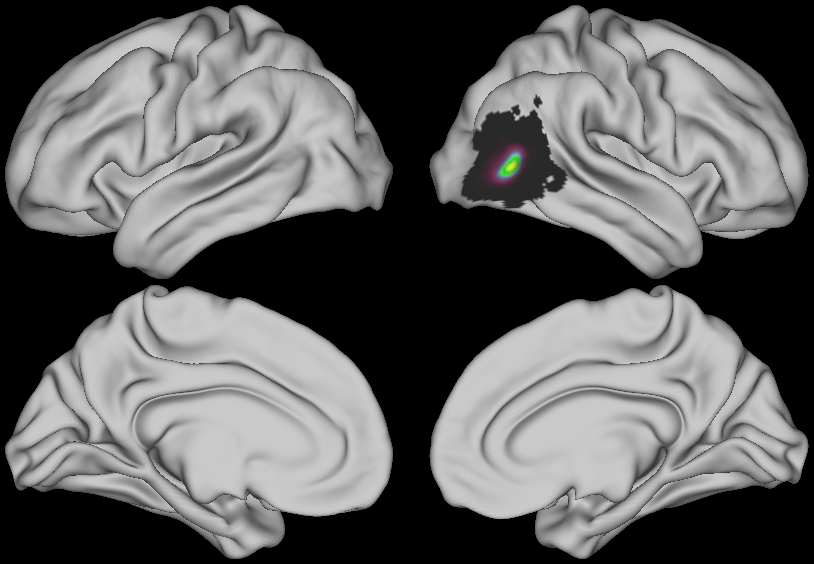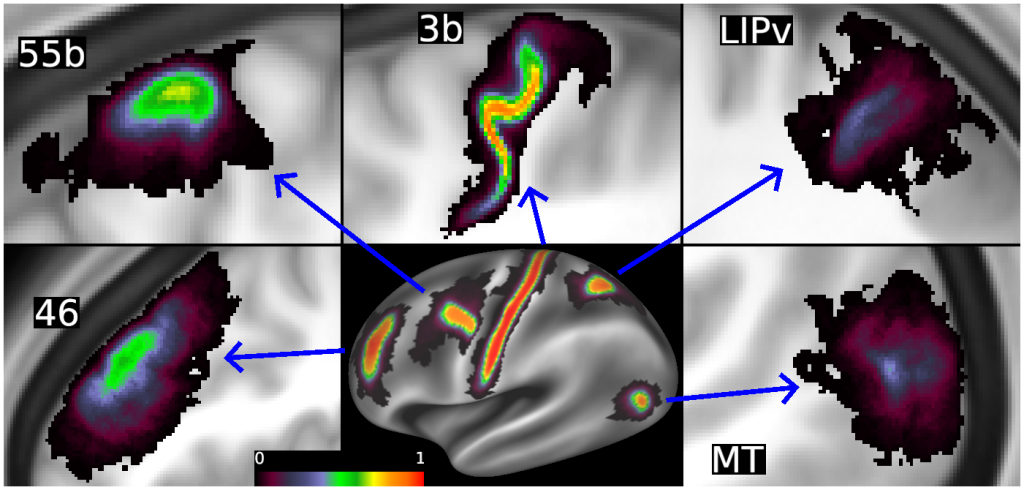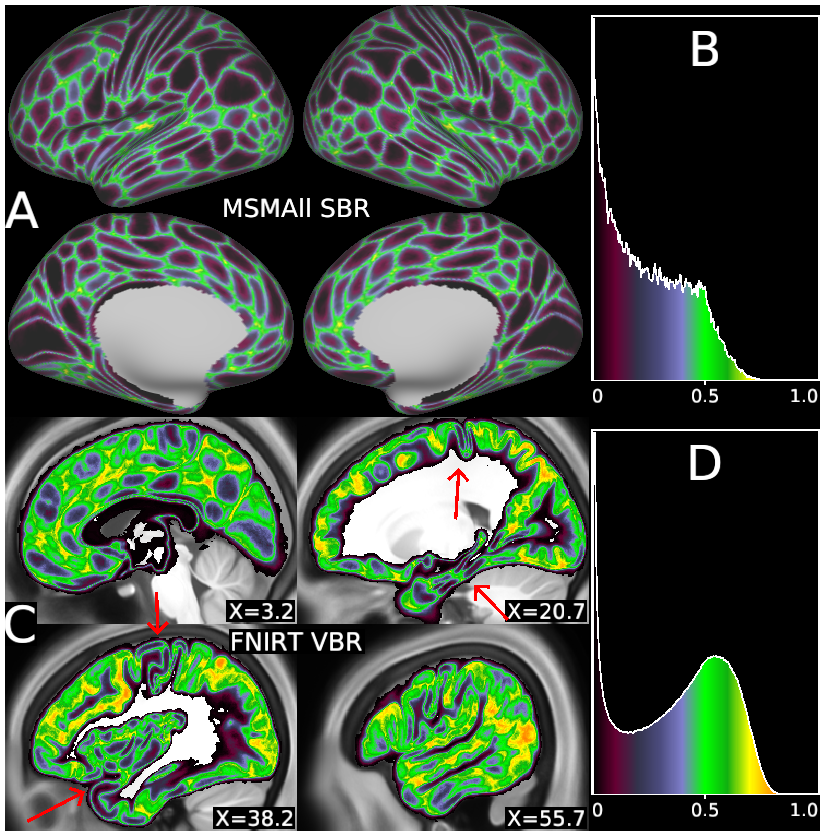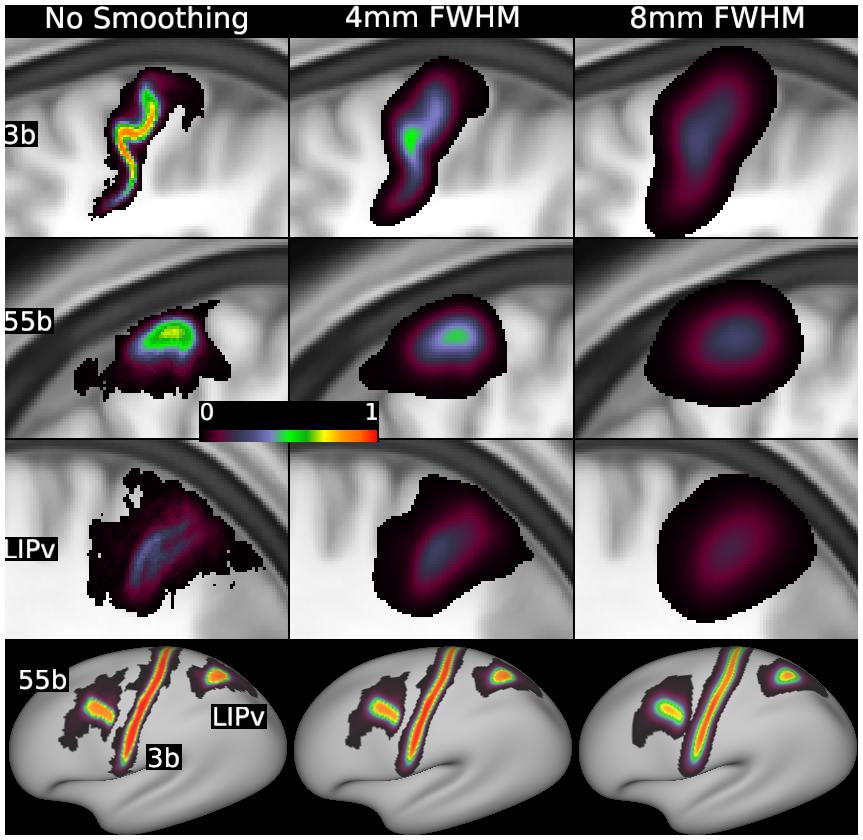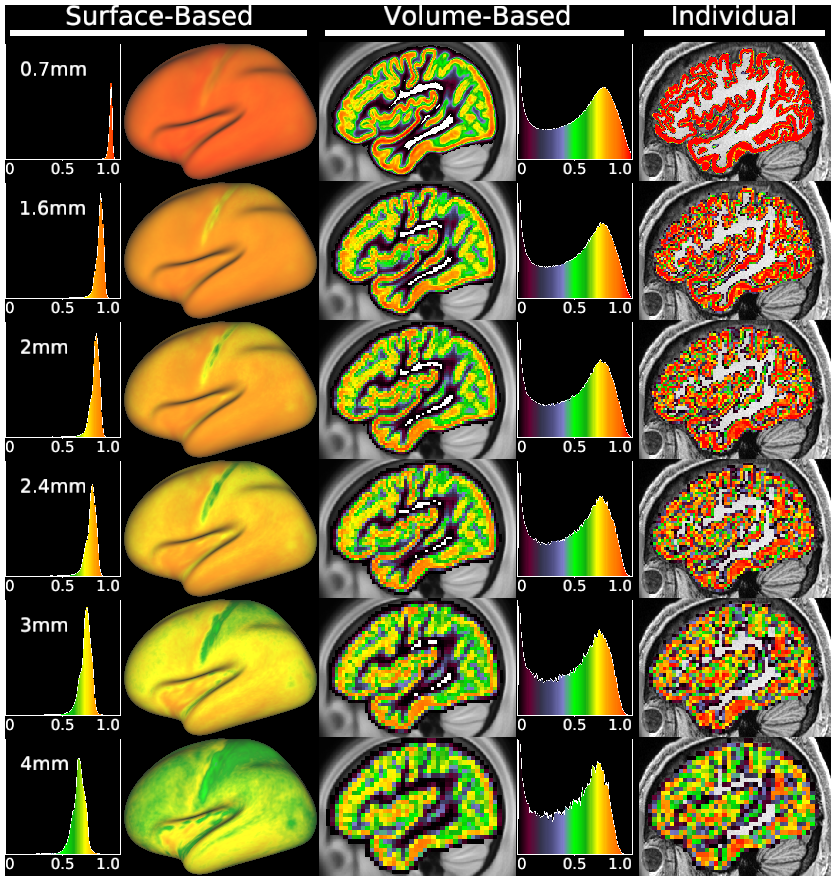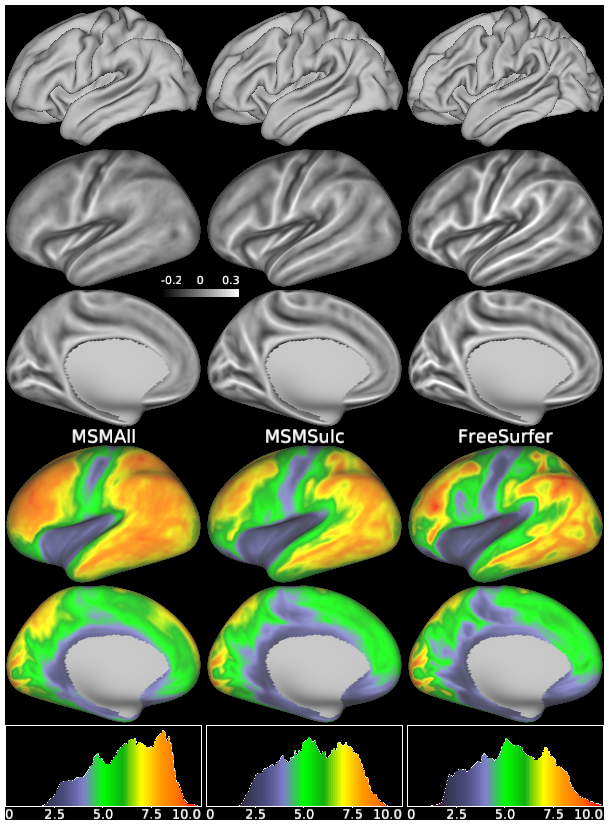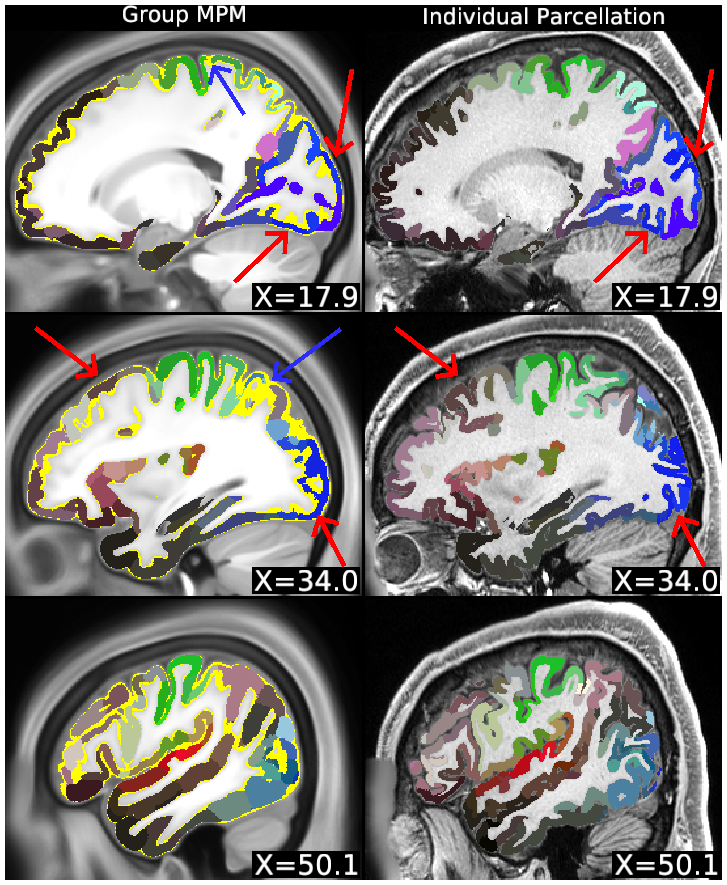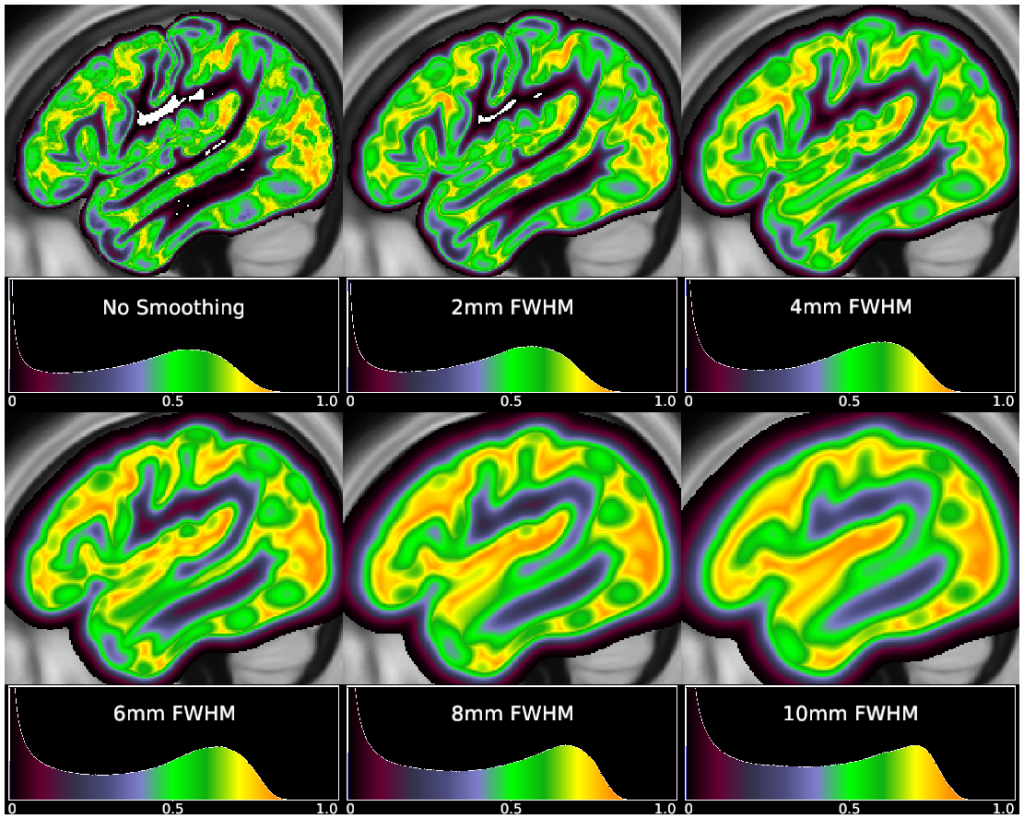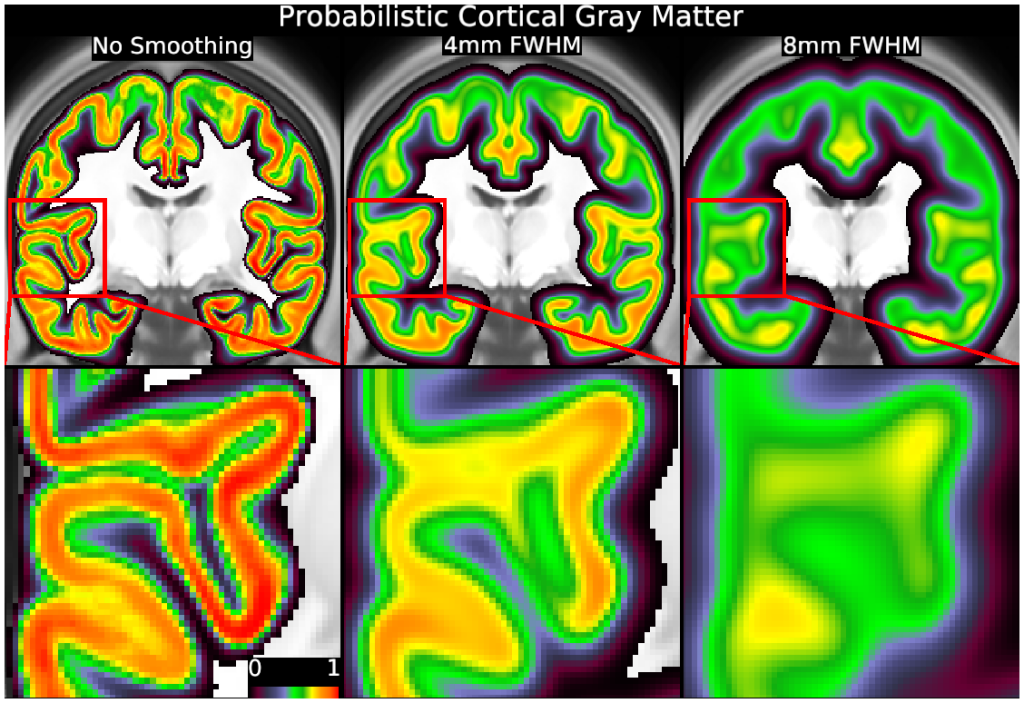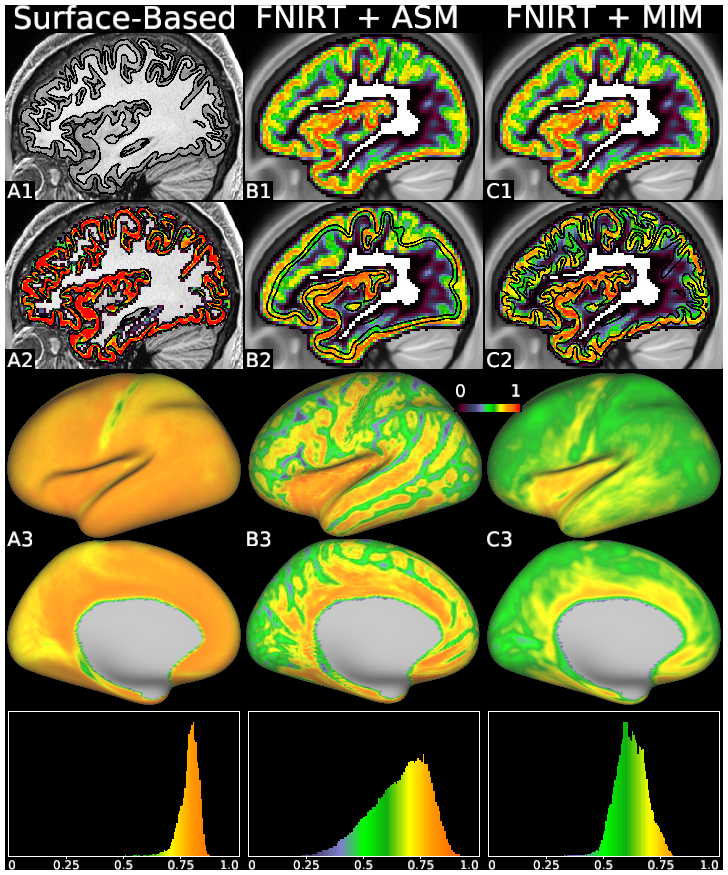FULL TITLE:
The Impact of Traditional Neuroimaging Methods on the Spatial Localization of Cortical Areas
SPECIES:
Human
DESCRIPTION:
Most human brain-imaging studies have traditionally used low-resolution images, inaccurate methods of cross-subject alignment, and extensive blurring. Recently, a high-resolution approach with more accurate alignment and minimized blurring was used by the Human Connectome Project to generate a multimodal map of human cortical areas in hundreds of individuals. Starting from these data, we systematically compared these two approaches, showing that the traditional approach is nearly three times worse than the Human Connectome Project’s improved approach in two objective measures of spatial localization of cortical areas. Furthermore, we demonstrate considerable challenges in comparing data across the two approaches and, as a result, argue that there is an urgent need for the field to adopt more accurate methods of data acquisition and analysis.
ABSTRACT:
Localizing human brain functions is a long-standing goal in systems neuroscience. Toward this goal, neuroimaging studies have traditionally used volume-based smoothing, registered data to volume-based standard spaces, and reported results relative to volume-based parcellations. A novel 360-area surface-based cortical parcellation was recently generated using multimodal data from the Human Connectome Project, and a volume-based version of this parcellation has frequently been requested for use with traditional volume-based analyses. However, given the major methodological differences between traditional volumetric and Human Connectome Project-style processing, the utility and interpretability of such an altered parcellation must first be established. By starting from automatically generated individual-subject parcellations and processing them with different methodological approaches, we show that traditional processing steps, especially volume-based smoothing and registration, substantially degrade cortical area localization compared with surface-based approaches. We also show that surface-based registration using features closely tied to cortical areas, rather than to folding patterns alone, improves the alignment of areas, and that the benefits of high-resolution acquisitions are largely unexploited by traditional volume-based methods. Quantitatively, we show that the most common version of the traditional approach has spatial localization that is only 35% as good as the best surface-based method as assessed using two objective measures (peak areal probabilities and “captured area fraction” for maximum probability maps). Finally, we demonstrate that substantial challenges exist when attempting to accurately represent volume-based group analysis results on the surface, which has important implications for the interpretability of studies, both past and future, that use these volume-based methods.
PUBLICATION:
Proceedings of the National Academy of Sciences
- DOI:
10.1073/pnas.1801582115
- Timothy S. Coalson
- David C. Van Essen
- Matthew F. Glasser
- Washington University in St. Louis
-
Coalson_et_al_2018_extrafiles.scene
SCENES: -
Coalson_et_al_2018.scene
SCENES: -
Coalson_et_al_2018_suppl.scene
SCENES:

